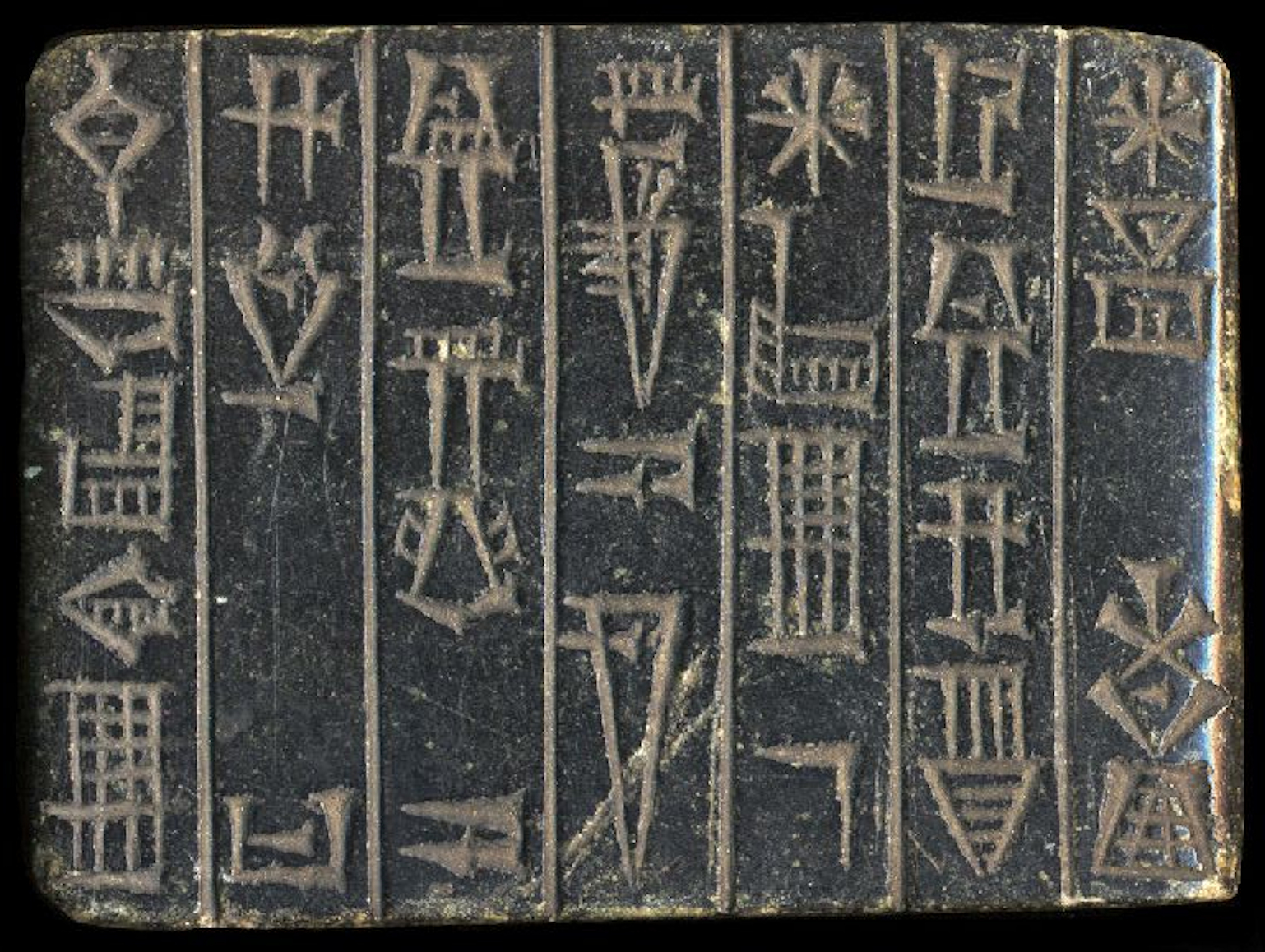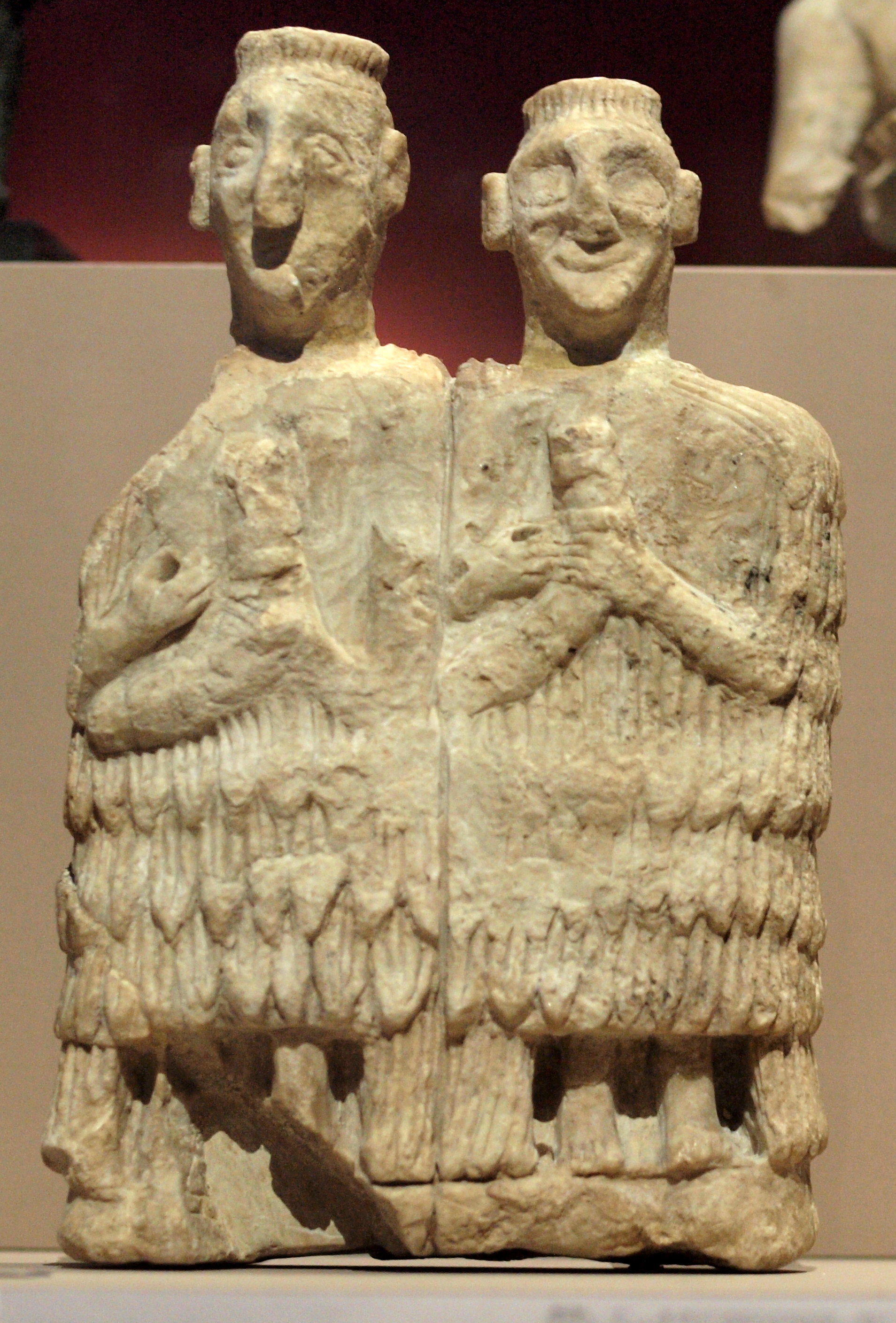|
List Of Religious Texts
The following is a non-exhaustive list of links to specific religious texts which may be used for further, more in-depth study. Bronze Age Ancient Egyptian religion * Pyramid Texts * Coffin Texts * Book of the Dead * Book of Caverns * Book of Gates * Amduat * Book of the Heavenly Cow * Book of the Earth * Litany of Re * The Contendings of Horus and Seth * Atenism: Great Hymn to the Aten Sumerian religion * Hymn to Enlil * Kesh Temple Hymn * Song of the hoe * Debate between Winter and Summer * Epic of Gilgamesh * Epic of Enmerkar ** Enmerkar and the Lord of Aratta ** Enmerkar and En-suhgir-ana * Epic of Lugalbanda ** Lugalbanda in the Mountain Cave ** Lugalbanda and the Anzud Bird * Angim * Inanna#Origin myths, Enki and the World Order * Enlil#Origin myths, Enlil and Ninlil * Enmesharra#Mythology, Enlil and Namzitara * Inanna#Origin myths, Inanna and Utu * Inanna#Origin myths, Inanna Prefers the Farmer * Inanna#Conquests and patronage, Inanna and Enki * Inanna#Conquests a ... [...More Info...] [...Related Items...] OR: [Wikipedia] [Google] [Baidu] |
Religious Text
Religious texts, including scripture, are texts which various religions consider to be of central importance to their religious tradition. They often feature a compilation or discussion of beliefs, ritual practices, moral commandments and laws, ethical conduct, spiritual aspirations, and admonitions for fostering a religious community. Within each religion, these texts are revered as authoritative sources of guidance, wisdom, and divine revelation. They are often regarded as sacred or holy, representing the core teachings and principles that their followers strive to uphold. Etymology and nomenclature According to Peter Beal, the term ''scripture'' – derived from (Latin) – meant "writings anuscriptsin general" prior to the medieval era, and was then "reserved to denote the texts of the Old and New Testaments of the Bible". Beyond Christianity, according to the ''Oxford World Encyclopedia'', the term ''scripture'' has referred to a text accepted to contain the "sacr ... [...More Info...] [...Related Items...] OR: [Wikipedia] [Google] [Baidu] |
Debate Between Winter And Summer
The Debate between Winter and Summer or Myth of Emesh and Enten is a Sumerian creation myth belonging to the genre of Sumerian disputations, written on clay tablets in the mid to late 3rd millennium BC. Disputations Seven "debate" topics are known from the Sumerian literature, falling in the category of ' disputations'; some examples are: the debate between sheep and grain; the debate between bird and fish; the tree and the reed; and the dispute between silver and copper, etc. These topics came some centuries after writing was established in Sumerian Mesopotamia. The debates are philosophical and address humanity's place in the world. Compilation The first lines of the myth were discovered on the University of Pennsylvania Museum of Archaeology and Anthropology, catalogue of the Babylonian section (CBS), tablet number 8310 from their excavations at the temple library at Nippur. This was translated by George Aaron Barton in 1918 and first published as "Sumerian religio ... [...More Info...] [...Related Items...] OR: [Wikipedia] [Google] [Baidu] |
Agushaya Hymn
The Agušaya Hymn or Song of Agušaya is an Old Babylonian literary work, a “song of praise”, written in the Akkadian language concerning the goddess Ištar, identified with the serpent deity Irnina. It may have been called “the Snake has Turned” in antiquity, as it has ''ú-ta-ar'' MUŠ inscribed at the top edge at the beginning. It is extant on two unprovenanced tablets, designated ATablet A, VAT 5946, VS 10, 214, in the Vorderasiatisches Museum Berlin. and B,Tablet B, unknown siglum and present whereabouts, RA 15, 159ff the latter of which includes a request for eternal life for king Hammurabi (reigned c. 1792 BC to c. 1750 BC), on the fifth column, 26th line, for whom it is thought to have been composed as an epic hymn of celebration of “the mad dancer in battle”. It is arranged into ten ''kirugú''- stanzas (Akkadian: ''šēru'') and six ''ĝešgiĝal''- antiphons as lyrical retorts, the numbering of which suggest that the work extends over the two tablets, a ... [...More Info...] [...Related Items...] OR: [Wikipedia] [Google] [Baidu] |
Enūma Eliš
' ( Akkadian Cuneiform: , also spelled "Enuma Elish"), meaning "When on High", is a Babylonian creation myth ( named after its opening words) from the late 2nd millennium BCE and the only complete surviving account of ancient near eastern cosmology. It was recovered by English archaeologist Austen Henry Layard in 1849 (in fragmentary form) in the ruined Library of Ashurbanipal at Nineveh (Mosul, Iraq). A form of the myth was first published by English Assyriologist George Smith in 1876; active research and further excavations led to near completion of the texts and improved translation. ''Enūma Eliš'' has about a thousand lines and is recorded in Akkadian on seven clay tablets, each holding between 115 and 170 lines of Sumero-Akkadian cuneiform script. Most of Tablet V has never been recovered, but, aside from this lacuna, the text is almost complete. Over the seven tablets, it describes the creation of the world, a battle between gods focused on the offering to Marduk, ... [...More Info...] [...Related Items...] OR: [Wikipedia] [Google] [Baidu] |
Ninurta
Ninurta (: , possible meaning "Lord [of] Barley"), also known as Ninĝirsu (: , meaning "Lord [of] Girsu"), is an List of Mesopotamian deities, ancient Mesopotamian god associated with farming, healing, hunting, law, scribes, and war who was first worshipped in early Sumer. In the earliest records, he is a god of agriculture and healing, who cures humans of sicknesses and releases them from the power of Demons#Mesopotamia, demons. In later times, as Mesopotamia grew more militarized, he became a warrior deity, though he retained many of his earlier agricultural attributes. He was regarded as the son of the chief god Enlil and his main Cult (religious practice), cult center in Sumer was the Eshumesha temple in Nippur. Ninĝirsu was honored by Gudea, King Gudea of Lagash (ruled 2144–2124 BC), who rebuilt Ninĝirsu's temple in Lagash. Later, Ninurta became beloved by the Assyrians as a formidable warrior. The Assyrian king Ashurnasirpal II (ruled 883–859 BC) built a massive tem ... [...More Info...] [...Related Items...] OR: [Wikipedia] [Google] [Baidu] |
Inanna's Descent Into The Underworld
Inanna is the ancient Mesopotamian goddess of war, love, and fertility. She is also associated with political power, divine law, sensuality, and procreation. Originally worshipped in Sumer, she was known by the Akkadians, Babylonians, and Assyrians as Ishtar. Her primary title is "the Queen of Heaven". She was the patron goddess of the Eanna temple at the city of Uruk, her early main religious center. In archaic Uruk, she was worshipped in three forms: morning Inanna (Inana-UD/hud), evening Inanna (Inanna sig), and princely Inanna (Inanna NUN), the former two reflecting the phases of her associated planet Venus. Her most prominent symbols include the lion and the eight-pointed star. Her husband is the god Dumuzid (later known as Tammuz), and her (attendant) is the goddess Ninshubur, later conflated with the male deities Ilabrat and Papsukkal. Inanna was worshipped in Sumer as early as the Uruk period (), and her worship was relatively localized before the conquest of Sarg ... [...More Info...] [...Related Items...] OR: [Wikipedia] [Google] [Baidu] |
Enmesharra
Enmesharra ( , "Lord of all ''Me (mythology), me''s") was a List of Mesopotamian deities, Mesopotamian god associated with the Ancient Mesopotamian underworld, underworld. He was regarded as a member of an old generation of deities, and as such was commonly described as a ghost or resident of the underworld. He is best known from various lists of primordial deities, such as the "theogony of Enlil," which lists many generations of ancestral deities. Various fragmentary myths describe confrontations between him and deities such as Enlil, Ninurta or Marduk. The myth ''Enlil and Namzitara'' describes him as Enlil's paternal uncle, and alludes to a belief that he was the ruler of the universe in the distant past, possibly after usurping the position of his nephew. He has been compared with Anzû, Anzu, who in the corresponding myth also steals Enlil's right to declare destinities for himself. Texts commonly mention his children, usually identified as the "Seven sons of Enmesharra," a ... [...More Info...] [...Related Items...] OR: [Wikipedia] [Google] [Baidu] |
Enlil
Enlil, later known as Elil and Ellil, is an List of Mesopotamian deities, ancient Mesopotamian god associated with wind, air, earth, and storms. He is first attested as the chief deity of the Sumerian pantheon, but he was later worshipped by the Akkadian Empire, Akkadians, Babylonian Empire, Babylonians, Assyrian Empire, Assyrians, and Hurrians. Enlil's primary center of worship was the Ekur temple in the city of Nippur, which was believed to have been built by Enlil himself and was regarded as the "mooring-rope" of heaven and earth. He is also sometimes referred to in Sumerian texts as Nunamnir. According to one Sumerian hymn, Enlil himself was so holy that not even the other gods could look upon him. Enlil rose to prominence during the twenty-fourth century BC with the rise of Nippur. His Cult (religious practice), cult fell into decline after Nippur was sacked by the Elamites in 1230 BC and he was eventually supplanted as the chief god of the Mesopotamian pantheon by the Baby ... [...More Info...] [...Related Items...] OR: [Wikipedia] [Google] [Baidu] |
Inanna
Inanna is the List of Mesopotamian deities, ancient Mesopotamian goddess of war, love, and fertility. She is also associated with political power, divine law, sensuality, and procreation. Originally worshipped in Sumer, she was known by the Akkadian Empire, Akkadians, Babylonian religion, Babylonians, and Assyrians as Ishtar. Her primary title is Queen of Heaven (antiquity), "the Queen of Heaven". She was the patron goddess of the Eanna temple at the city of Uruk, her early main religious center. In archaic Uruk, she was worshipped in three forms: morning Inanna (Inana-UD/hud), evening Inanna (Inanna sig), and princely Inanna (Inanna NUN), the former two reflecting the phases of her associated planet Venus. Her most prominent symbols include the Lion of Babylon, lion and the Star of Ishtar, eight-pointed star. Her husband is the god Dumuzid (later known as Tammuz), and her (attendant) is the goddess Ninshubur, later conflated with the male deities Ilabrat and Papsukkal. Inanna ... [...More Info...] [...Related Items...] OR: [Wikipedia] [Google] [Baidu] |
Angim
The work known by its incipit, Angim, "The Return of Ninurta to Nippur", is a 210-line mythological praise poem for the ancient Mesopotamian warrior-god Ninurta, describing his return to Nippur from an expedition to the mountains (KUR), where he boasts of his triumphs against "rebel lands" (KI.BAL), boasting to Enlil in the Ekur, before returning to the Ešumeša temple—to “manifest his authority and kingship.” The ancient Sumerian language, Sumerian epic had been provided with an intralinear Akkadian language, Akkadian translation during the course of the second millennium. The myth Three copies from Nippur provide a subscript labeling it a šìr-gíd-da, or "long song", of Ninurta, where the term ''long'' perhaps refers to the tuning of the musical instrument intended to accompany the song. It is extant in unilingual Sumerian from Nippur during the Old Babylonian period, and thereafter in bilingual editions from the Kassites, Kassite, middle Assyrian and neo-Assyrian and ... [...More Info...] [...Related Items...] OR: [Wikipedia] [Google] [Baidu] |
Lugalbanda And The Anzud Bird
''Lugalbanda and the Anzu Bird'' (or ''Lugalbanda II'', ''The Return of Lugalbanda'', ''Lugalbanda and the Anzu Bird'') is a Sumerian mythological account. The story is the second of two about the hero Lugalbanda. The first story is known as ''Lugalbanda in the Mountain Cave'', or sometimes ''Lugalbanda in the Wilderness''. They are part of a four-story cycle that describes the conflicts between Enmerkar, king of Unug (Uruk), and the king of Aratta. The texts are believed to be composed during the Ur III Period (21st century BCE), but almost all of the extant copies come from Isin-Larsa period (20th-18th centuries BCE). Nevertheless, a few fragmentary bilingual copies (Sumerian and Akkadian) from Nineveh suggest that the texts were still known during the first millennium.''ibid.'' p.135 Synopsis This story starts with Lugalbanda alone in the highlands of Lullubi. He finds the chick of the giant Anzû (or Anzud) bird, which is described as a lion-headed eagle, and decides to feed ... [...More Info...] [...Related Items...] OR: [Wikipedia] [Google] [Baidu] |
Lugalbanda In The Mountain Cave
''Lugalbanda in the Mountain Cave'' (or ''Lugalbanda I'', ''Lugalbanda in the Wilderness'') is a Sumerian mythological account. It is one of the four known stories that belong to the same cycle describing conflicts between Enmerkar, king of Unug (Uruk), and an unnamed king of Aratta. The story is followed by another known as Lugalbanda and the Anzu Bird, together forming the two parts of one story. The stories, from the composer’s point of view, take place in the distant past. The accounts are believed to be composed during the Ur III Period (21st century BCE), although almost all extant copies come from Isin-Larsa period (20th-18th centuries BCE). Tablets containing these stories were found in various locations of southern Iraq, primarily in the city of Nippur, and were part of the curriculum of Sumerian scribal schools during the Old Babylonian period (20th-17th centuries BCE). Synopsis Sumerian king Enmerkar wants to conquer the land of Aratta. Rounding up his army, Enmer ... [...More Info...] [...Related Items...] OR: [Wikipedia] [Google] [Baidu] |





